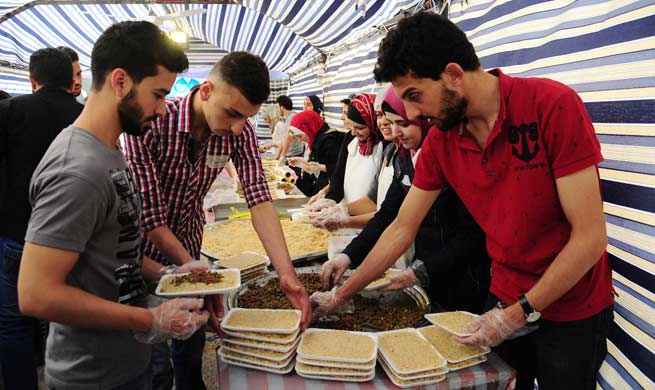CHICAGO, May 27 (Xinhua) -- Chicago Board of Trade (CBOT) grains futures closed mixed over the trade week which ended May 26, with corn and wheat futures trading modestly higher while corn futures dropping nearly 3 percent.
CBOT July corn futures ended little changed, again trading in just a 9-cent range, and the trade lacks enthusiasm with respect to establishing any meaningful new position. Very early crop conditions across the Western corn belt are very good; conditions in the Eastern corn belt are very bad, and how this translates into a national yield is still rather uncertain.
The forecast is trending more summer-like in early or mid-June, though traders' concerns are still too much rain having fallen across Illinois, Indiana, Oklahoma and Michigan, and climate guidance suggests above normal rainfall throughout the month of June which if realized will weigh on yield potential there.
Otherwise, rallies will struggle in the next 60 days or so as South American corn remains quite cheap, and Brazil,Argentina will dominate world export demand into early autumn.
As for wheat futures, it was more of the same in global wheat markets with US winter wheat contracts ending steady and spring wheat ending higher.
Minneapolis's premium to Chicago has hit a multi-week high, and note that the season's first national spring wheat condition rating is due Tuesday.
Planting has caught up to average in the Dakotas, but now dryness is an issue as the Weekly Drought monitor put abnormally dry conditions across much of the region on Thursday. On the other hand, producer contacts in the Western Plains indicate wheat damaged by freeze has recovered a bit better than expected.
Early strength in the soybean market was short lived, with July in the red by Tuesday, and the market traded down into Friday. South American hedge pressure along with more bearish technical trends at the end of the month took both old and new crop prices to new lows, with July ending the week three cents under November.
Trade news for the week was limited, selling from South America turned short term trends to bearish, and funds used the opportunity to add to their already significant short position ahead of the holiday weekend.
U.S. farmers had 53 percent of the national soybean crop planted last week and progress should reach 64-67 percent on Tuesday. The Southern and Eastern parts of the Midwest saw the heaviest rains.















